Picture this: a valley wrapped in snow-capped mountains, where prayer flags dance in crystal-clear air and waterfalls thunder through ancient forests. Welcome to Mechuka—a remote corner of Arunachal Pradesh that feels like stepping into another world entirely.
But here’s the thing about this Himalayan paradise: timing your visit makes all the difference between an incredible adventure and a challenging ordeal. The best time to visit Mechuka depends on what you’re chasing—snow-dusted peaks, vibrant festivals, or misty monsoon magic.
This guide breaks down everything you need to know about planning your Mechuka journey. We’ll walk through each season, reveal hidden spots most travelers miss, and share practical tips that’ll save you headaches (and money) along the way.
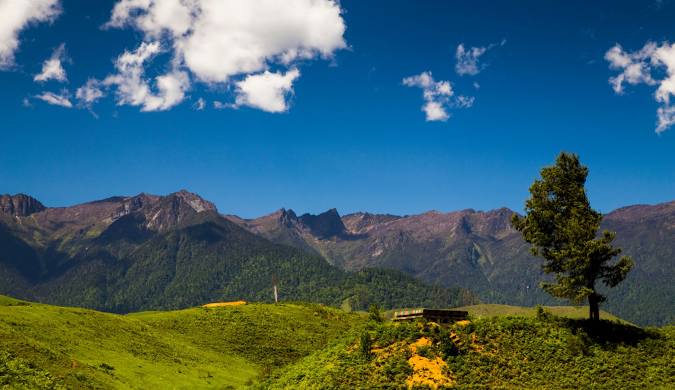
Quick Facts About Mechuka
Before we dive into the best time to visit Mechuka, let’s get acquainted with the basics:
| Detail | Information |
| Location | West Siang District, Arunachal Pradesh |
| Altitude | 6,000 feet (1,829 meters) |
| Nearest Town | Aalo (Along) – 135 km away |
| Primary Tribes | Memba and Adi communities |
| Languages | Hindi, English, local dialects |
| Climate Type | Temperate to Alpine |
| Nickname | “Land of Medicinal Snow” |
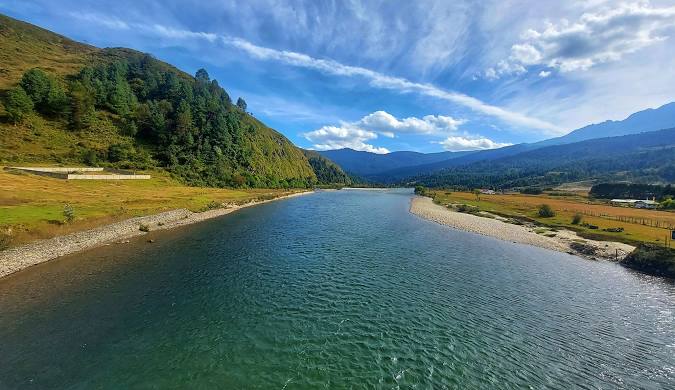
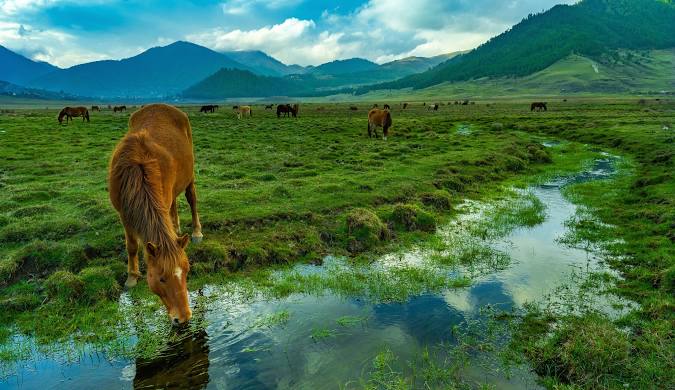
When Is the Best Time to Visit Mechuka? (Month-by-Month Breakdown)
Let’s get to the heart of the matter. Mechuka transforms dramatically with each passing season, offering completely different experiences throughout the year.
Spring Season (March – April): Nature’s Awakening
Spring brings Mechuka back to life after the winter freeze. The valley sheds its white blanket and bursts into color.
What to Expect:
- Rhododendron forests explode in shades of red, pink, and white
- Comfortable daytime temperatures (15°C to 20°C)
- Clear mountain views perfect for photography
- The Mopin Festival (April) celebrates the agricultural season with traditional dances and local rice beer
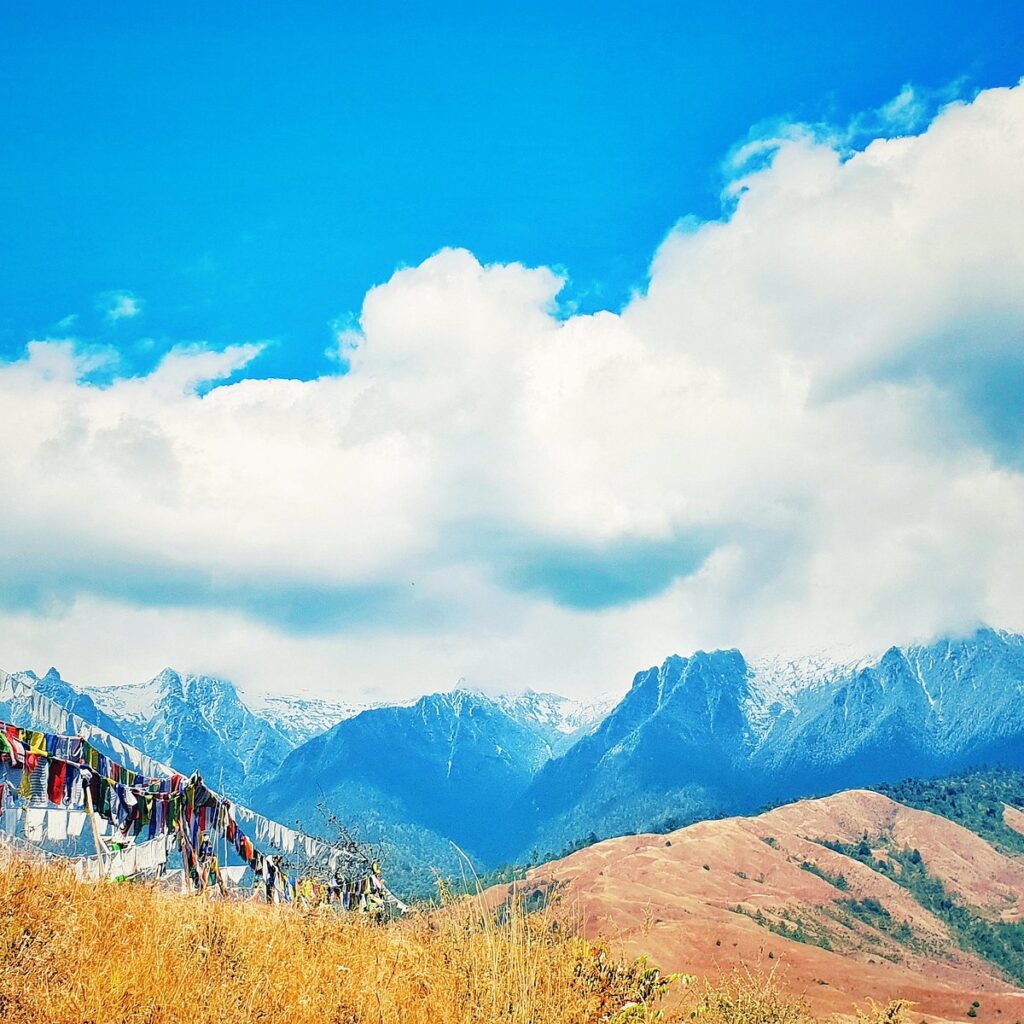
| Month | Temperature | Rainfall | Key Highlights |
| March | 10°C – 18°C | Low | Snow melting, roads opening |
| April | 12°C – 20°C | Low | Mopin Festival, blooming flowers |
Pro Tip: April is fantastic for trekking since trails are dry but the landscape stays lush from melted snow.
Summer Season (May – June): Green Paradise
If you love verdant landscapes without extreme cold, summer is your season.
What to Expect:
- The entire valley turns emerald green
- Pleasant weather with temperatures between 18°C and 25°C
- Perfect conditions for exploring forest trails
- Rivers swell with glacial melt, making waterfalls spectacular
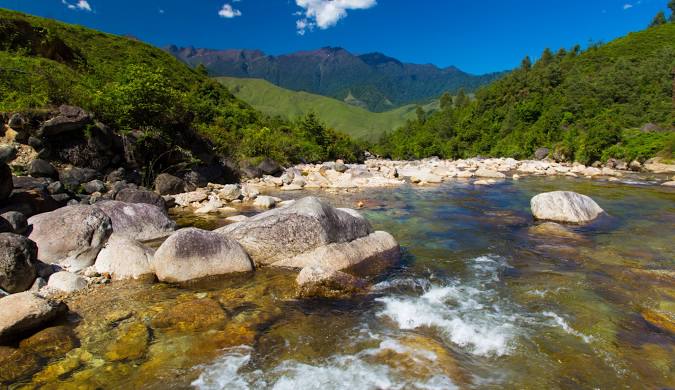
| Month | Temperature | Rainfall | Key Highlights |
| May | 15°C – 23°C | Moderate | Lush greenery, comfortable hiking |
| June | 18°C – 25°C | Increasing | Pre-monsoon freshness, fewer crowds |
Travel Insight: This is when homestay owners are most welcoming, as tourist season kicks into full gear before the monsoon arrives.
Monsoon Season (July – September): The Challenging Beauty
Let’s be honest—monsoon isn’t the ideal time for most travelers. But it has its own charm if you’re up for adventure.
What to Expect:
- Heavy rainfall (up to 300mm per month)
- Frequent landslides and road blockages
- Mist-covered valleys create dramatic landscapes
- Hardly any tourists—you’ll have attractions to yourself
- Lower accommodation prices
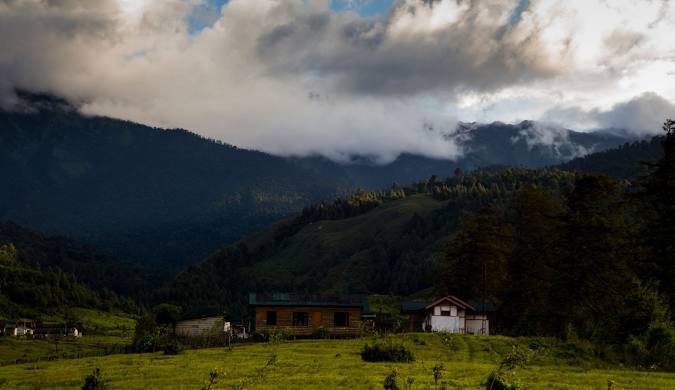
| Month | Temperature | Rainfall | Key Highlights |
| July | 20°C – 24°C | Very High | Monsoon begins, misty views |
| August | 19°C – 23°C | Very High | Peak rainfall, travel restrictions |
| September | 17°C – 21°C | High | Monsoon retreating, roads risky |
Important Warning: Many tour operators won’t take bookings during July-August due to safety concerns. If you do visit, keep your schedule flexible and prepare for possible delays.
Autumn Season (October – November): The Golden Window
Here’s where magic happens. Most experienced travelers and photographers agree—autumn is the absolute best time to visit Mechuka.
What to Expect:
- Crystal-clear skies revealing stunning Himalayan peaks
- Comfortable temperatures (10°C to 20°C)
- Post-monsoon freshness with vibrant greenery
- The Adventure Festival showcases local culture, sports, and cuisine
- Stable weather makes road travel safer and more enjoyable
| Month | Temperature | Rainfall | Key Highlights |
| October | 12°C – 20°C | Minimal | Perfect weather, Adventure Festival |
| November | 8°C – 16°C | Very Low | Clear mountain views, excellent photography |
Why Autumn Wins: October-November offers the sweet spot between summer warmth and winter cold. Roads are accessible, visibility is outstanding, and you can explore every corner of Mechuka without weather worries.
Winter Season (December – February): The Snow Wonderland
If you’ve ever wondered why people call Mechuka the “Mini Switzerland” of India, visit in winter.
What to Expect:
- Heavy snowfall transforms the valley into a white paradise
- Freezing temperatures (often below 0°C at night)
- Losar (Tibetan New Year) celebrations in February
- Limited road access—some routes may close temporarily
- Fewer tourists but magical winter experiences
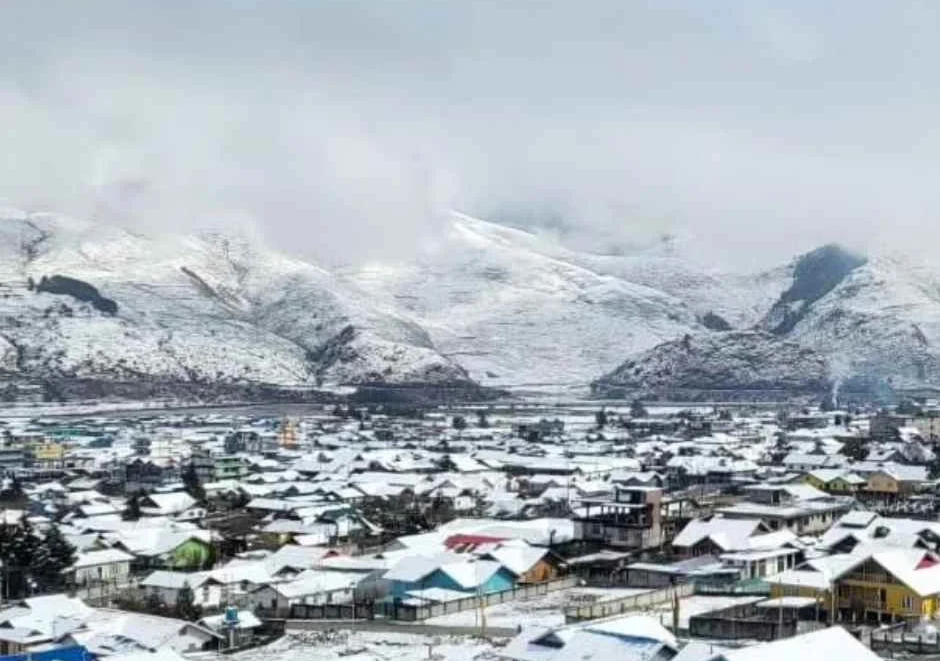
| Month | Temperature | Rainfall/Snowfall | Key Highlights |
| December | 0°C – 10°C | Moderate snow | Early winter, snow begins |
| January | -3°C – 8°C | Heavy snow | Peak winter, stunning landscapes |
| February | -2°C – 10°C | Moderate snow | Losar Festival, warming begins |
Winter Reality Check: Pack serious cold-weather gear. We’re talking thermal layers, heavy jackets, and insulated boots. But the reward? Walking through a real-life snow globe.
Seasonal Highlights & Festival Calendar
Losar: The Tibetan New Year (February)
The Memba community celebrates Losar with incredible energy. Expect three days of festivities featuring:
- Traditional masked dances called Chaam
- Butter lamp lighting ceremonies at monasteries
- Sharing of Khapse (sweet fried pastries) and local delicacies
- Colorful prayer flags adorning every rooftop
The Samten Yongcha Monastery becomes the cultural heart during Losar. Visitors are usually welcome to observe (and sometimes participate) if they approach respectfully.
Mopin Festival: Harvest Celebration (April)
The Adi tribe’s Mopin Festival marks the end of the sowing season. Here’s what makes it special:
- Popir dance performances by women in traditional attire
- Offering of Apong (local rice beer) to the goddess Mopin Ane
- Community feasts with Zan (rice mixed with local greens)
- Three days of singing, dancing, and celebrating agricultural abundance
Local Tip: Homestay families often invite guests to join Mopin celebrations. Don’t miss this chance for authentic cultural exchange.
Adventure Festival (October)
This relatively new event puts Mechuka on the adventure tourism map:
- Rock climbing and rappelling competitions
- River rafting on the Siyom River
- Mountain biking challenges on rugged terrain
- Showcasing of local handicrafts and cuisine
- Traditional archery demonstrations
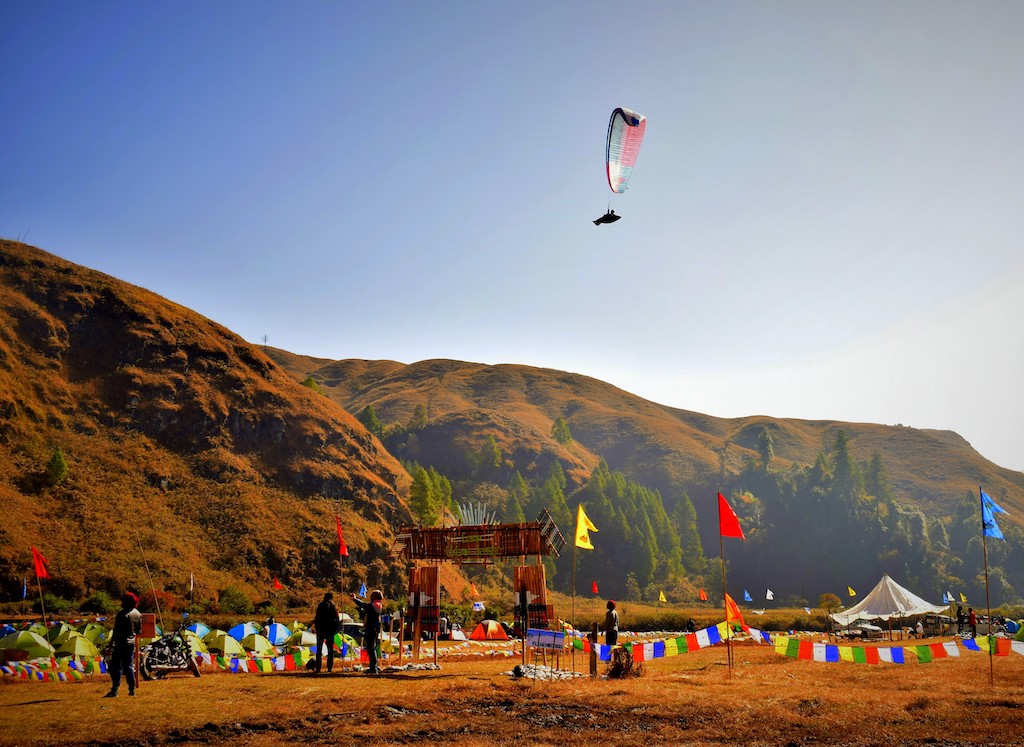
The festival attracts adventure enthusiasts from across India and makes October an especially vibrant time to visit.
Top Attractions & Offbeat Spots in Mechuka
Must-Visit Places
Siko Dido Waterfall This stunning cascade drops from a forested cliff, creating a natural amphitheater. The 10-minute walk from the village passes through pine forests and offers great bird-watching opportunities. Visit in late afternoon when sunlight hits the water spray, creating rainbows.
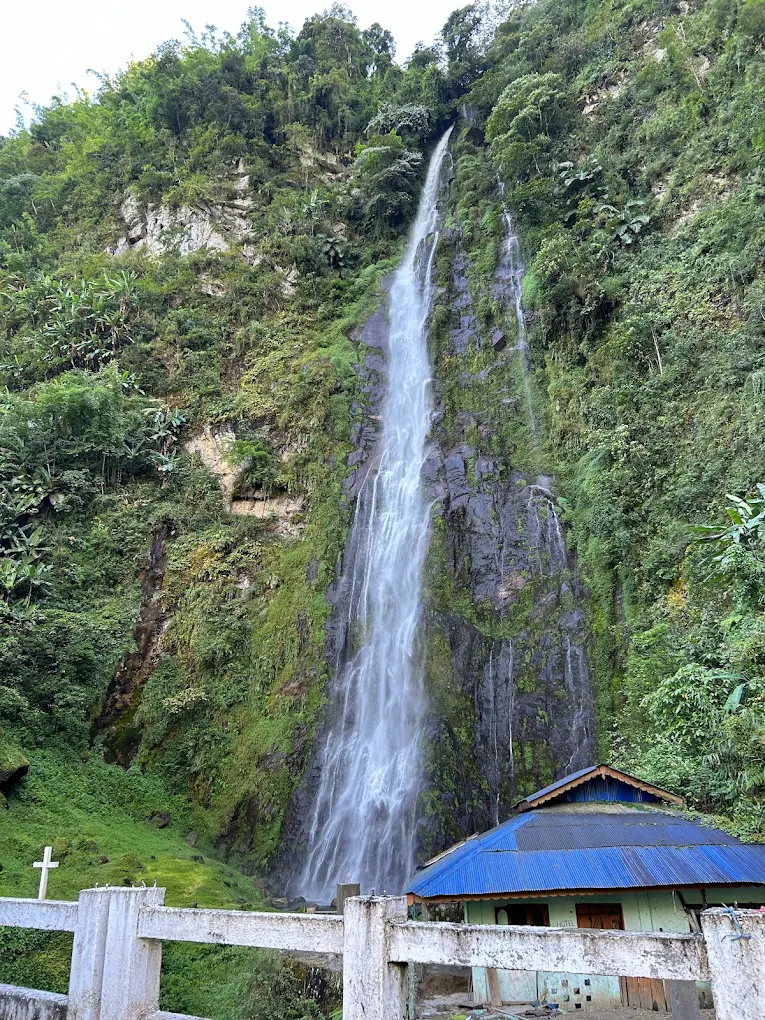
Dorjeeling Village Despite the name, this has nothing to do with the famous tea town. Dorjeeling is a traditional Memba settlement perched on a hillside. Walking through narrow lanes lined with wooden houses gives you glimpses into daily mountain life. Friendly locals often invite travelers for butter tea.
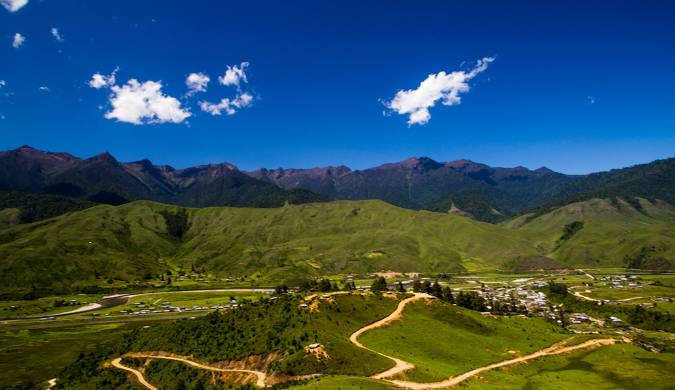
Siyom River & Hanging Bridges The turquoise Siyom River carves through Mechuka valley, and several traditional hanging bridges cross it. These cable bridges sway as you walk—thrilling but safe. The bridge near the main town offers incredible photo opportunities with mountains reflected in the water.
Guru Nanak Taposthan (Gurudwara) According to local legend, Guru Nanak meditated here during his travels. The small Gurudwara sits atop a hill, requiring a 30-minute climb. The panoramic valley views from the top make the effort worthwhile. The caretaker often serves simple langar (community meal) to visitors.
Hanuman Point Located on the India-China border, this military post requires special permission to visit (arranged through your ILP). The view of the valley from this vantage point is spectacular, though photography restrictions apply near sensitive areas.
Samten Yongcha Monastery This 400-year-old Buddhist monastery houses beautiful murals and ancient scriptures. Monks welcome respectful visitors and sometimes explain the significance of various prayer wheels and butter lamps. Morning prayers (around 6 AM) offer an authentic spiritual experience.
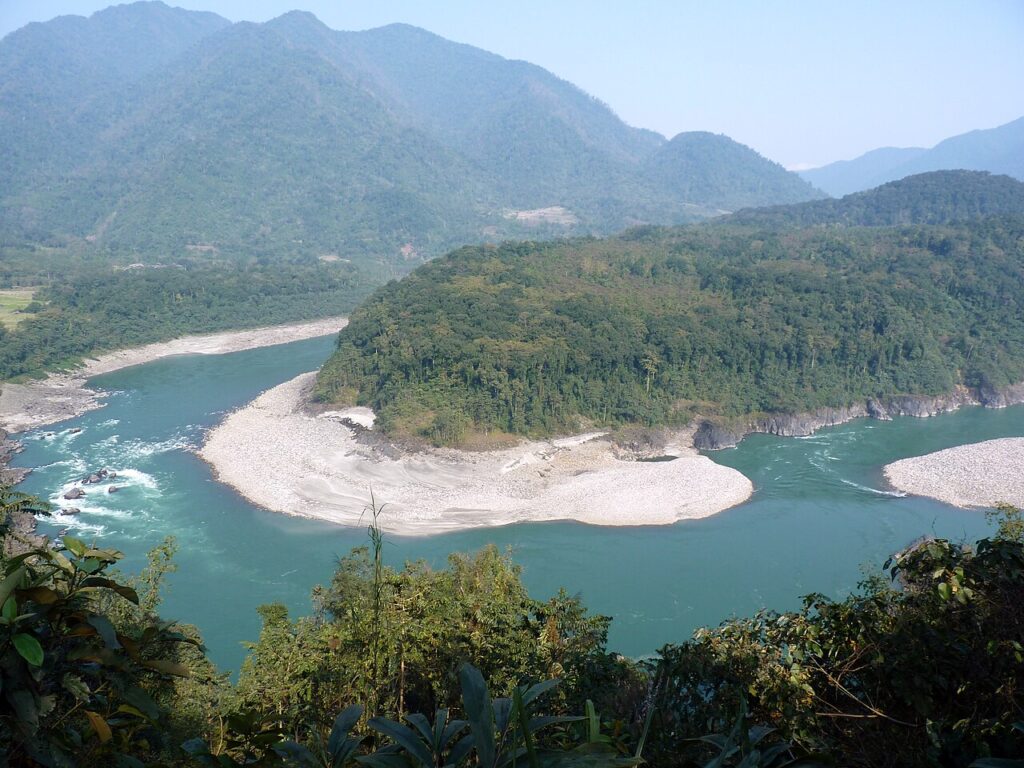
Adventure & Offbeat Experiences
Lamang Village This remote settlement sits two hours from the main town. Fewer tourists make it here, meaning more authentic interactions with locals. The village is known for traditional weaving, and you might see women creating intricate textiles on wooden looms.
Yarlung Camp For serious adventurers, Yarlung offers a wilderness camping experience. The area provides access to higher-altitude trekking routes and pristine forest trails. Arrange guides through local travel operators in Mechuka town, as navigation can be tricky.
Forest Trails & Bird Watching Mechuka sits in a biodiversity hotspot. Trails around Dorjeeling Village and near the airstrip offer chances to spot Himalayan monal, blood pheasants, and various laughingthrush species. Early mornings are best for bird activity.
Hidden Gem: The Secret Viewpoint
Here’s something most guides won’t tell you. About 3 kilometers past the main town on the road toward the old airstrip, there’s an unmarked dirt path leading uphill on your left. Follow it for 15 minutes, and you’ll reach a small clearing locals call “Photo Point.”
This spot offers a 180-degree view of the entire valley—mountains, river, and settlements—without the crowds. Sunrise here is absolutely magical, with first light painting the peaks golden while the valley stays in shadow.
Sample Itineraries for Different Travelers
The Weekend Escape (3-Day Itinerary)
Perfect for travelers with limited time who want to experience Mechuka’s highlights.
Day 1: Arrival & Acclimatization
- Arrive in Mechuka from Aalo (6-7 hour drive)
- Check into a homestay
- Gentle evening walk around the main town
- Visit local market and interact with residents
Day 2: Cultural & Natural Exploration
- Morning visit to Samten Yongcha Monastery
- Trek to Siko Dido Waterfall
- Afternoon exploration of Dorjeeling Village
- Cross the hanging bridge over Siyom River
- Sunset from Guru Nanak Taposthan
Day 3: Adventure & Departure
- Early morning visit to the secret viewpoint
- Explore the old airstrip area
- Last-minute shopping for local handicrafts
- Begin return journey to Aalo
The Explorer’s Week (5-Day Itinerary)
For travelers who want to dive deeper into Mechuka’s culture and natural beauty.
Days 1-2: Follow the 3-day itinerary above
Day 3: Remote Villages & Culture
- Full-day excursion to Lamang Village
- Learn about traditional weaving techniques
- Have lunch with a local family
- Short forest trail walk in the afternoon
Day 4: River & Mountain Activities
- Morning fishing or riverside relaxation on Siyom River
- If visiting during Adventure Festival, participate in activities
- Afternoon visit to Hanuman Point (permit required)
- Explore lesser-known trails near the monastery
Day 5: Leisure & Departure
- Sunrise photography session
- Visit any missed spots or revisit favorites
- Pack and begin return journey
The Adventurer’s Trail (7+ Day Itinerary)
For hardcore explorers who want the full Mechuka experience including remote areas.
Days 1-3: Follow the 5-day itinerary
Day 4-5: Yarlung Camp Expedition
- Trek to Yarlung with local guide
- Overnight camping in wilderness
- Higher-altitude exploration and photography
- Return to Mechuka town
Day 6: Rest & Cultural Immersion
- Recovery day after camping
- Participate in daily activities with homestay family
- Attend evening prayer sessions at monastery
- Learn to cook local dishes
Day 7: Final Exploration & Departure
- Morning visit to any unexplored forest trails
- Final photography sessions
- Purchase local products as souvenirs
- Leisurely return journey begins
How to Reach Mechuka & Road Conditions
Getting to Mechuka is half the adventure. The journey involves careful planning since this remote valley isn’t easily accessible.
By Road: The Primary Route
From Aalo (Along): The most common route covers approximately 135 kilometers but takes 6-7 hours due to challenging terrain.
- Road conditions: Narrow, winding mountain roads with spectacular views
- Best vehicle: SUVs or sturdy vehicles with good ground clearance
- Route highlights: Passes through Rumgong and Tato villages
- Shared taxis: Available from Aalo, costing ₹800-1,200 per person
From Itanagar: The capital city sits about 370 kilometers away, requiring a full day of travel (12-14 hours).
- Route: Itanagar → Ziro → Aalo → Mechuka
- Break journey: Consider overnight stops in Ziro or Aalo
- Road quality: Mix of good highways and challenging mountain stretches
Important Road Advisory:
- Monsoon months (July-September) see frequent landslides
- Some sections may close temporarily after heavy rain
- Winter snowfall can block roads for short periods
- Always check road status before starting your journey
- Carry emergency supplies including water, snacks, and basic medicines
By Air: Nearest Airports
Dibrugarh Airport (Assam)
- Distance: Approximately 240 kilometers from Aalo
- Connectivity: Daily flights from major cities
- Journey time: 6-7 hours by road from Dibrugarh to Aalo, plus another 6-7 hours to Mechuka
Pasighat Airport (Arunachal Pradesh)
- Distance: Closer to Mechuka than Dibrugarh
- Connectivity: Limited flights; check availability
- Journey time: Shorter road journey compared to Dibrugarh
Reality Check: Regardless of which airport you choose, reaching Mechuka requires a full day of road travel. Plan accordingly.
By Train: Nearest Railway Station
Murkongselek Railway Station
- Distance: About 170 kilometers from Aalo
- Limited trains from major cities
- Road journey from station to Mechuka: 8-9 hours total
Better Option: Most travelers fly to Dibrugarh or Guwahati and continue by road, as train connectivity in this region remains limited.
Local Transport in Mechuka
Once you arrive, Mechuka town is small enough to explore on foot. For visiting outlying attractions:
- Local taxis: Available through homestay hosts
- Shared vehicles: For popular spots like Siko Dido
- Motorbike rentals: Limited availability; inquire locally
- Walking: Best way to experience the valley authentically
Permit & Entry Formalities: What You Must Know
This section is crucial. You cannot visit Mechuka without proper permits—no exceptions.
For Indian Citizens: Inner Line Permit (ILP)
What is ILP? The Inner Line Permit is a mandatory travel document for visiting Arunachal Pradesh, including Mechuka.
Application Process:
- Apply online at the official Arunachal Pradesh ILP portal
- Fill in personal details and travel information
- Upload ID proof (Aadhaar, PAN, Passport, or Voter ID)
- Upload passport-size photograph
- Pay the fee (approximately ₹100-200)
- Receive ILP via email within 24-48 hours
Offline Application:
- Available at ILP counters in airports and at state border checkpoints
- Same documents required
- Instant issuance possible
- Slightly higher fees
Validity:
- Standard ILP: Valid for 30 days from the date of issue
- Can be extended at local Deputy Commissioner’s office if needed
Important Note: Carry multiple photocopies of your ILP. Checkpoints along the route will verify your permit.
For Foreign Nationals: Protected Area Permit (PAP)
Mechuka falls under a restricted zone due to its proximity to the international border.
Application Requirements:
- Must apply through a recognized travel agent in India
- Group of minimum 2 people required (solo travelers won’t be granted PAP)
- Apply at least 6-8 weeks before travel
- Provide passport copies, visa details, and detailed itinerary
Application Authority:
- Ministry of Home Affairs, Government of India
- Processing through local Arunachal Pradesh authorities
Restrictions:
- Certain areas near Hanuman Point may have additional restrictions
- Always travel with your registered guide
- Photography restrictions apply in sensitive border areas
Processing Time: 4-8 weeks (plan well in advance)
Entry Checkpoints
You’ll encounter permit checks at:
- Banderdewa checkpoint (entering Arunachal Pradesh)
- Aalo checkpoint
- Sometimes random checks on the road to Mechuka
Keep your permits accessible throughout the journey.
Accommodation, Food & Local Culture
Where to Stay
Homestays (Highly Recommended) Mechuka has limited hotel infrastructure, making homestays the best option for authentic experiences.
What to Expect:
- Wooden houses with basic but clean rooms
- Shared bathrooms in most cases
- Home-cooked meals included in tariff
- Warm hosts who share stories and local knowledge
- Cost: ₹800-1,500 per person per night with meals
Popular Homestays:
- Check online travel forums for updated recommendations
- Advance booking recommended during October-November
- Some don’t have online presence; book through travel agents
Hotels & Guest Houses A few basic hotels operate in the main town:
- Limited amenities compared to cities
- Hot water availability varies
- Cost: ₹1,500-3,000 per night
- Block early during peak season
Camping Options If visiting Yarlung or other remote areas, camping becomes necessary. Arrange tents and equipment through local guides since rental facilities are scarce.
Food & Cuisine
Local Specialties to Try:
Thukpa: Hearty noodle soup perfect for cold evenings. Usually made with vegetables or meat, flavored with local herbs.
Momos: Steamed dumplings filled with vegetables, pork, or yak cheese. The dipping sauce made with local chilies adds serious kick.
Zan: Traditional Adi dish made with rice and leafy greens. Nutritious comfort food served in most homestays.
Apong: Local rice beer brewed by families. Mild alcohol content and slightly sweet taste. Offered during festivals and gatherings.
Khapse: Sweet fried pastries made during Losar. Different shapes and sizes, all delicious with butter tea.
Butter Tea (Gur Gur Cha): Traditional Tibetan tea churned with butter and salt. Acquired taste but incredibly warming in winter.
Dining Options:
- Homestays provide all meals (breakfast, lunch, dinner)
- Few small restaurants in main town serve basic Indian and Chinese food
- Carry snacks for day trips since food isn’t available at remote attractions
- Fresh trout sometimes available from Siyom River
Cultural Etiquette & Practices
Respecting Local Customs:
Religious Sites: Remove shoes before entering monasteries and the Gurudwara. Ask permission before photographing inside.
Photography: Always ask before clicking pictures of people, especially during festivals. Some religious ceremonies prohibit photography.
Dress Code: Wear modest clothing, especially in villages. While locals are understanding of tourists, respectful attire shows consideration.
Alcohol: Apong is part of local culture, but public drunkenness is frowned upon. Drink responsibly if offered.
Environmental Respect: Mechuka’s pristine nature is its greatest asset. Carry your trash back, don’t pick plants or flowers, and stick to marked trails.
Interactions: Locals are friendly but reserved initially. A smile and basic greeting (say “Ju-le” in Memba areas) goes a long way.
Home Visits: If invited to a local home, accept tea or food offered—refusing might seem rude. Bring small gifts like fruits or sweets if possible.
Budget & Expense Planner
Planning your finances for Mechuka requires careful consideration since ATM access is limited.
Estimated Daily Costs
Budget Traveler (₹1,500-2,500 per day):
- Homestay accommodation with meals: ₹1,000-1,500
- Local transport/shared taxis: ₹300-500
- Snacks and extras: ₹200-500
Mid-Range Traveler (₹3,000-5,000 per day):
- Hotel/better homestay: ₹2,000-3,000
- Private vehicle rental: ₹500-1,000
- Additional meals and activities: ₹500-1,000
One-Time Costs:
- ILP fee: ₹100-200
- Travel from Aalo to Mechuka: ₹800-1,200 (shared), ₹4,000-6,000 (private vehicle)
- Guide fees (if hiring): ₹1,500-2,500 per day
Critical Money Matters
ATM & Banking: There are NO functional ATMs in Mechuka. Let that sink in.
Cash is King:
- Carry sufficient cash for your entire stay
- Withdraw maximum possible amount in Aalo before heading to Mechuka
- Keep cash in multiple safe places
- Small denomination notes are more useful for small purchases
Card Acceptance:
- Credit and debit cards don’t work anywhere
- No POS machines in shops or hotels
- UPI and digital payments extremely limited
- Cash is the only reliable payment method
Petrol Availability:
- One petrol pump operates in Mechuka town
- Availability can be unpredictable
- Prices higher than plains due to transportation costs
- If driving, ensure your tank is full before leaving Aalo
Budget-Saving Tips:
- Book homestays directly to avoid commission charges
- Travel in groups to share vehicle costs
- Carry your own snacks for day trips
- Visit during shoulder season (March or November) for better accommodation deals
Packing List & Gear Suggestions
What you pack makes a huge difference in your Mechuka experience. Here’s a comprehensive list organized by season.
For All Seasons (Essentials)
Documents:
- ILP (multiple copies)
- Government-issued ID
- Travel insurance papers
- Emergency contact information
Technology:
- Power bank (at least 20,000 mAh)
- Camera with extra batteries and memory cards
- Smartphone with downloaded offline maps
- Universal charger and adapters
- Headlamp or flashlight
Health & Hygiene:
- Personal medications
- Basic first-aid kit (bandages, antiseptic, pain relievers)
- Altitude sickness medicine (Diamox if prescribed)
- Sunscreen (SPF 50+)
- Lip balm
- Wet wipes and hand sanitizer
- Toilet paper (public facilities are basic)
Miscellaneous:
- Reusable water bottle
- Dry snacks (energy bars, nuts, chocolates)
- Cash in sealed envelope
- Trash bags for carrying your waste
- Small notebook and pen
For Spring & Summer (March-June)
Clothing:
- Light fleece jacket or sweater
- Long-sleeve shirts (2-3)
- Comfortable trekking pants (2)
- T-shirts (3-4)
- Inner thermals (1 set for cold mornings)
- Comfortable walking shoes
- Rain jacket or windbreaker
- Sun hat or cap
- Sunglasses
Extras:
- Insect repellent
- Light rainproof cover for backpack
For Monsoon (July-September)
Clothing:
- Waterproof jacket (essential)
- Waterproof pants or poncho
- Quick-dry trekking pants (2-3)
- Long-sleeve shirts (3-4)
- Extra socks (moisture-wicking)
- Waterproof trekking shoes
- Sandals for camp/homestay use
Monsoon Essentials:
- Complete rain cover for backpack
- Plastic bags for electronics
- Umbrella (compact)
- Extra pair of shoes
For Autumn (October-November)
Clothing:
- Medium-weight jacket
- Fleece or wool sweater
- Long-sleeve thermal tops (2)
- Comfortable trekking pants (2-3)
- T-shirts for layering (2-3)
- Warm socks (4-5 pairs)
- Sturdy trekking boots
- Gloves and warm cap
- Scarf or buff
Photography Gear:
- Extra memory cards (clear skies mean lots of photos)
- Tripod for landscape shots
- Lens cleaning kit
For Winter (December-February)
Clothing (Layer Up!):
- Heavy down jacket or parka
- Thermal inner wear (2-3 sets)
- Wool sweaters (2)
- Insulated trekking pants
- Warm trekking socks (5-6 pairs)
- Waterproof, insulated boots
- Woolen gloves (2 pairs)
- Warm cap covering ears
- Thick scarf or balaclava
- Down vest for extra warmth
Winter Essentials:
- Hand and toe warmers
- Extra power banks (batteries drain faster in cold)
- Moisturizer and lip balm (for dry, cold air)
- Thermos flask for hot drinks
Special Gear for Activities:
- Trekking poles (helpful on icy trails)
- Microspikes or crampons (if trekking in snow)
- Waterproof gaiters
Safety, Health & Travel Tips
Altitude Acclimatization
Mechuka sits at 6,000 feet, which isn’t extremely high but can still cause mild altitude issues for some travelers.
Symptoms to Watch For:
- Headache
- Nausea or dizziness
- Fatigue
- Shortness of breath
Prevention Tips:
- Stay hydrated (drink more water than usual)
- Avoid alcohol for the first 24 hours
- Don’t overexert yourself on day one
- Eat light meals initially
- Rest adequately
When to Worry: If symptoms worsen or don’t improve after 24 hours, consult locals about medical facilities. Serious altitude sickness is rare at this elevation but listen to your body.
Mobile Network & Connectivity
Reality Check on Connectivity: Mechuka has limited mobile network coverage. Don’t expect to stay connected like you are in cities.
Which Networks Work:
- BSNL: Best coverage, though still patchy
- Airtel: Limited coverage in main town only
- Jio and Vodafone: Generally don’t work
Internet:
- Extremely slow or unavailable
- Some homestays claim WiFi but speeds are frustratingly low
- Download essential apps, maps, and entertainment before arriving
Communication Tips:
- Inform family you’ll be unreachable for days
- Download offline maps (Google Maps allows this)
- Save important contact numbers of homestay and local guides
- Enjoy the digital detox—it’s refreshing!
Monsoon Safety
If visiting during July-September, extra caution is necessary.
Landslide Precautions:
- Check road conditions before starting daily journeys
- Avoid traveling during heavy rain
- Listen to local advice about risky routes
- Keep your travel schedule flexible
- Don’t ignore road closure warnings
River Safety:
- Siyom River swells during monsoon
- Avoid getting too close to riverbanks
- Hanging bridges are safe but can be slippery
General Safety Tips
Wildlife: Encounters are rare but possible. If trekking in forests:
- Make noise to avoid surprising animals
- Never feed wild animals
- Travel with local guides in remote areas
Theft & Crime: Mechuka is incredibly safe with virtually no reported crime against tourists. Still, practice basic caution:
- Don’t flash expensive equipment unnecessarily
- Keep cash secure
- Homestay hosts are trustworthy, but secure valuables
Medical Facilities:
- Basic health center available in Mechuka town
- Limited medical supplies and staff
- Carry your own medications and first-aid kit
- Serious medical emergencies require evacuation to Aalo or beyond
Emergency Contacts:
- Save local police station number
- Keep homestay host’s contact handy
- Note location of health center upon arrival
Respecting the Environment
Mechuka’s untouched beauty is its biggest draw. Help preserve it:
Leave No Trace:
- Carry all trash back with you
- Don’t burn or bury waste
- Use designated toilet facilities
- Avoid single-use plastics
Water Sources:
- Don’t contaminate streams or rivers
- Use biodegradable soaps away from water bodies
- Purify drinking water from natural sources
Flora & Fauna:
- Don’t pick flowers or plants
- Stay on marked trails to prevent erosion
- Don’t disturb wildlife or bird nests
- Avoid loud music in nature
Cultural Sensitivity: As mentioned earlier, respect local customs, dress modestly, and engage respectfully with communities.
FAQs / Quick Answer Box
Q: What is the absolute best time to visit Mechuka?
A: The best time to visit Mechuka is during autumn (October-November) for clear skies, pleasant weather, and excellent visibility of Himalayan peaks. If you want to experience snowfall and winter magic, December to February is ideal, though temperatures drop significantly.
Q: How many days are enough for Mechuka?
A: 4 to 5 days are ideal to explore Mechuka thoroughly, covering major attractions, some trekking, and cultural experiences. Weekend travelers can manage in 3 days for highlights only, while adventure seekers may want 7+ days to explore remote areas like Yarlung.
Q: Is there a mobile network in Mechuka?
A: Mobile connectivity is very limited. BSNL has the best (though still patchy) coverage, while Airtel works occasionally in the main town. Jio and Vodafone generally don’t work. Expect to be mostly offline and enjoy the digital detox.
Q: Do I need a permit to visit Mechuka?
A: Yes, all visitors need permits. Indian tourists require an Inner Line Permit (ILP), which can be obtained online at the official Arunachal Pradesh ILP portal or at border checkpoints. Foreign nationals need a Protected Area Permit (PAP), which must be arranged through registered travel agents 4-8 weeks in advance.
Q: Are there ATMs in Mechuka?
A: No functional ATMs exist in Mechuka. You must carry sufficient cash for your entire trip. Withdraw maximum amount in Aalo before proceeding. Cards and digital payments don’t work in Mechuka.
Q: What should I pack for Mechuka in winter?
A: For winter (December-February), pack heavy down jackets, thermal layers (2-3 sets), insulated boots, woolen gloves and caps, thick socks, and moisturizer. Temperatures drop below freezing, and snowfall is common. Layer your clothing for maximum warmth.
Q: Is Mechuka safe for solo travelers?
A: Yes, Mechuka is very safe with friendly locals and virtually no crime. However, solo female travelers should follow standard safety precautions. The bigger challenge is navigation and logistics, so consider hiring local guides for remote areas.
Q: Can I visit Mechuka during monsoon?
A: It’s not recommended. July-September brings heavy rainfall, frequent landslides, and road blockages. Most tour operators avoid this period due to safety concerns. If you must visit, keep schedules flexible and prepare for delays.
Q: What is the temperature in Mechuka?
A: Temperature varies significantly by season:
- Spring (March-April): 10°C to 20°C
- Summer (May-June): 15°C to 25°C
- Monsoon (July-September): 17°C to 24°C
- Autumn (October-November): 8°C to 20°C
- Winter (December-February): -3°C to 10°C
Winter nights can drop well below freezing, while summer days remain comfortably cool.
Q: How far is Mechuka from Aalo?
A: Mechuka is approximately 135 kilometers from Aalo (Along), but the journey takes 6-7 hours due to narrow, winding mountain roads. The route passes through breathtaking landscapes and small villages like Rumgong and Tato.
Q: What language do people speak in Mechuka?
A: The local Memba and Adi communities speak their tribal dialects. However, Hindi is widely understood and spoken by most people. Basic English works in homestays and with younger locals. Learning a few local greetings enhances your experience.
Q: Are there restaurants in Mechuka?
A: Very few. A handful of small eateries serve basic Indian and Chinese food in the main town. Homestays provide all meals (breakfast, lunch, dinner), making them the best option. Carry snacks for day trips since food isn’t available at remote attractions.
Q: What are the main festivals in Mechuka?
A: The two major festivals are Losar (Tibetan New Year) in February, celebrated by the Memba community with masked dances and traditional ceremonies, and Mopin (harvest festival) in April, celebrated by the Adi tribe with traditional dances, rice beer, and community feasts.
Q: Is photography allowed in Mechuka?
A: Yes, but with restrictions. Always ask permission before photographing people, especially during religious ceremonies. Photography is restricted near military installations and border areas like Hanuman Point. Respect these restrictions—they’re for security reasons.
Q: What is Mechuka famous for?
A: Mechuka is famous for its stunning natural beauty (often called “Mini Switzerland”), pristine Siyom River, traditional hanging bridges, Buddhist monasteries, unique Memba and Adi tribal culture, and its remote, untouched Himalayan landscapes. It’s one of India’s most offbeat travel destinations.
Final Recommendation & Travel Summary
Choosing when to visit Mechuka ultimately depends on what kind of experience calls to you.
For Photographers & Nature Lovers: October and November offer the clearest skies, sharpest mountain views, and perfect lighting conditions. The post-monsoon greenery combined with crystal-clear visibility creates picture-perfect moments at every turn.
For Snow Enthusiasts: January transforms Mechuka into a white wonderland. If experiencing snowfall and winter magic tops your bucket list, brave the cold and visit between December and February. The Losar festival in February adds cultural richness to the snowy landscapes.
For Adventure Seekers: May to June and October to November provide ideal conditions for trekking, camping, and exploring remote areas like Yarlung. Stable weather and accessible trails make adventures safer and more enjoyable.
For Budget Travelers: March and late November offer shoulder-season benefits—fewer tourists, better accommodation deals, and pleasant weather. You’ll avoid peak-season crowds while still experiencing Mechuka’s beauty.
For Cultural Explorers: Time your visit around Losar (February) or Mopin (April) festivals to witness traditional celebrations, dances, and ceremonies. These festivals offer the most authentic cultural immersion possible.
What to Avoid: Skip July through early September unless you’re comfortable with monsoon challenges, road blockages, and unpredictable travel conditions.
The truth is, there’s no single “perfect” time that works for everyone. Mechuka reveals different personalities with each season—sometimes serene and snow-covered, other times lush and vibrant, occasionally misty and mysterious.
What matters most is that you’re prepared for whichever season you choose. Pack appropriately, carry enough cash, secure your permits in advance, and approach the journey with flexibility and an open mind.
This remote Himalayan valley rewards those willing to venture off the beaten path. The narrow mountain roads, limited connectivity, and basic facilities might seem challenging, but they’re precisely what keeps Mechuka pristine and authentic.
So start planning your adventure. Whether you’re chasing snow-capped peaks, cultural festivals, or simply seeking peace away from tourist crowds, Mechuka waits with open arms and untouched beauty.
The mountains are calling. When will you answer?
References & Further Reading
For the most accurate and updated information about visiting Mechuka, consult these official and reliable sources:
Official Government Resources:
- Arunachal Pradesh Tourism Official Website – For destination information, travel guidelines, and updates
- Arunachal Pradesh Inner Line Permit Portal – To apply for ILP online and check permit requirements
- India Meteorological Department – For weather forecasts and seasonal patterns
Travel Planning Resources:
- Ministry of Home Affairs, Government of India – For Protected Area Permit information for foreign nationals
- Arunachal Pradesh State Transport Services – For updated road conditions and transport schedules
Important Note: Road conditions, permit procedures, and festival dates can change. Always verify critical information through official channels before finalizing your travel plans.
Disclaimer: This guide is based on extensive research and traveler experiences current as of 2025. However, situations in remote areas like Mechuka can evolve. Cross-check essential details like permit requirements, road accessibility, and accommodation availability closer to your travel dates.
Safe travels, and may your Mechuka adventure be everything you dream of and more!
Read More Articles;
- Koundinya Wildlife Sanctuary Travel Guide 2026: Timings, Safari, Map, Reviews & Wildlife HighlightsNestled in the rugged terrain of the Eastern Ghats in Chittoor district, Koundinya Wildlife Sanctuary offers a unique wilderness experience just 120 km from Bangalore. This remarkable sanctuary holds a special place in Andhra Pradesh’s conservation history—it’s the only sanctuary in the state where you can witness majestic Asian elephants (Elephas maximus) in their natural
- Kaas Plateau Travel Guide 2026: Best Time to Visit, Bloom Season, How to Reach & FAQsImagine standing on a vast expanse where nature paints the ground in every color imaginable—crimson reds, sunshine yellows, deep purples, and soft whites stretching as far as your eyes can see. This isn’t a fantasy; this is Kaas Plateau, Maharashtra’s very own Valley of Flowers! Nestled in the majestic Western Ghats near Satara, this UNESCO
- What Is the Quirimbas Archipelago Mozambique Known For? Complete Travel & Nature GuideIntroduction to the Quirimbas Archipelago Mozambique 🌊 Imagine stepping onto powdery white sand where your footprints are the only ones for miles. Picture crystal-clear turquoise waters hiding vibrant coral gardens teeming with sea turtles and rare dugongs. Welcome to the Quirimbas Archipelago Mozambique—one of Africa’s best-kept secrets and a paradise that most travelers haven’t even
- Is Angola Safe to Travel in 2025? Your Essential Guide to Health, Crime, and Landmine SafetyIs Angola safe to travel? Yes, but travel here requires mandatory preparation and constant situational awareness. International authorities generally classify Angola under a Level 2: Exercise Increased Caution or Exercise a High Degree of Caution. This level of risk is driven by violent crime, especially in the capital, Luanda, and critical deficiencies in medical facilities
- What Animals Live in Bale Mountains Ethiopia? Complete Wildlife GuideStanding at dawn on the windswept Sanetti Plateau, you might spot something extraordinary—a rust-colored wolf silhouetted against Africa’s largest Afro-alpine moorland. This isn’t just any wildlife encounter. The Bale Mountains Ethiopia harbor one of Earth’s most remarkable concentrations of endemic species, creatures found absolutely nowhere else on the planet. Stretching across southeastern Ethiopia, this UNESCO
